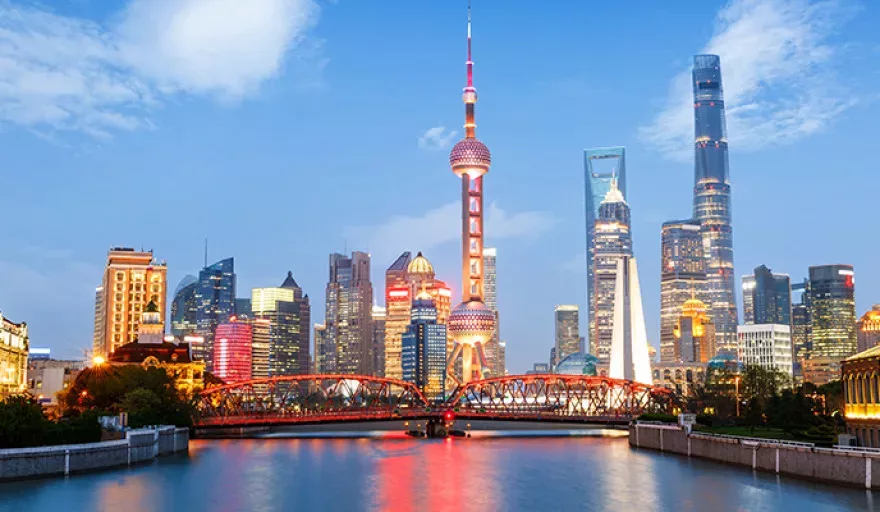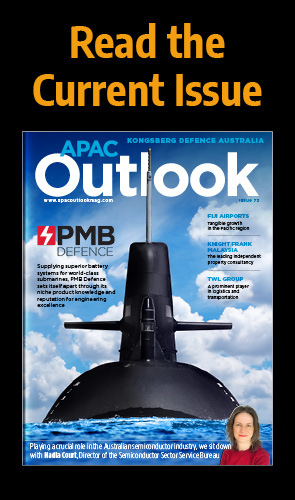Synonymous with futuristic technologies and innovative architecture, Shanghai is a modern city that typifies China’s progressive qualities.
Delving into the nucleus of the metropolis, you can find the world-famous waterfront promenade, the Bund, strewn with magnificent colonial-era buildings. Crossing the river, you will meet the Pudong district and its iconic landmarks –the 632-metre-tall Shanghai Tower and the Oriental Pearl TV Tower.
Architecture aside, the Maglev similarly epitomises Shanghai’s avant-garde attitudes. The world’s fastest train, travelling at speeds of up to 430 kilometres per hour, it’s able to cover the 19 miles between the Shanghai Pudong International Airport and central Pudong itself in just seven minutes.
Swerving away from the downtown glitz and glamour, meanwhile, you will find a traditional side to China’s largest city that’s steeped in character.
Be it the artistic, pagoda laden Yuyuan garden that is no less than an oasis amongst the bustling streets, or narrow back streets home to market vendors showcasing brightly coloured vegetables and fresh fish, it’s worth noting that Shanghai is, albeit more quietly, a champion of Chinese culture.
THE BUSINESS END
Home to both the Pudong International Airport and Hongqiao International Airport, Shanghai has established itself as transit hub for not only China but equally the Asia-Pacific region.
Patrick Chen, Deputy Director of the Shanghai Municipal Administration of Culture and Tourism (SMACT), explains: “Last year the number of passengers arriving and departing the Pudong International Airport stood at roughly 74.05 million, while the number of passengers arriving and departing the Hongqiao airport was about 43.65 million. Combined, these totalled 117.7 million.
“Further, it is reported that as of 2018, 107 Chinese and foreign airlines have opened regular flights in Shanghai, connecting 300 destinations in 48 countries around the world, of which 135 are international destinations.”
This has largely helped to uphold Shanghai’s reputation as an international economic, financial, trade, shipping and technological innovation centre, with a multitude of multinationals both based and headquartered within the city itself.
With a city-wide GDP of ¥3.27 trillion ($475 billion), a figure larger than the national GDP of Austria, Nigeria, the UAE or Norway, it’s ultimately easy to see why this reputation has emerged.
Q&A WITH SHANGHAI MUNICIPAL ADMINISTRATION OF CULTURE AND TOURISM
Owed to both business and leisure travel, the role of tourism is rising as an additional driver of economic success across Shanghai – an industry that the Shanghai Municipal Administration of Culture and Tourism is helping to propel.
Patrick Chen took the time out to answer our questions, providing insight as to why Shanghai is becoming such an illustrious, fruitful tourist hotspot.
Can you firstly talk me through the origins of the SMACT, how it came about, and its initial vision?
Patrick Chen (PC): China started a new round of institutional reforms of the State Council last year. As a result, it now consists of 26 ministries and commissions, including the Ministry of Culture and Tourism. Under this umbrella, the Shanghai Municipal Administration of Culture and Tourism (SMACT) formed in November last year.
The SMACT is the component department of Shanghai Municipal Government responsible for the development and management of the culture and tourism industries in Shanghai. It consists of 20 departments including promotions and marketing, resources development, industry development, museum, media, intangible cultural heritage and preservation of culture relics departments, amongst others.
Ultimately, our mission is to promote Shanghai as an ideal destination for business, exhibitions, MICE and indeed leisure.
Since inception, how has the SMACT developed and progressed in terms of its key objectives and the messages it tries to get across?
PC: Culture and tourism have a tight connection. Culture is the soul of the tourism industry, and tourism is the carrier of the culture. Since inception, our task has been to promote the development of the culture and tourism industry and spearhead the market, promoting the supply of more high-quality products.
On March 3, 2019 we issued 40 recommended tours in Shanghai, combined with the main culture and tourism resources. Among these tours, you can visit the popular scenic spots, taste delicious food, visit theatres, museums, art centres and so on. Through attending a variety of tourism fairs and exhibitions both home and abroad, we update the market with the latest information on Shanghai. Besides this, we also invite foreign travel agencies and media groups to tour the city.
How would you say Shanghai has developed in recent years as a business travel hub and what are the key reasons behind its growing appeal?
PC: Our convenient visa policy helps the development of business travel in Shanghai. Besides Chinese visas, foreigners can also apply for 144-hour transit visa-free stopovers in Shanghai, Jiangsu and Zhejiang province with certain requests. For tourist groups there are port visas and 15-day visa-free policies which are valid for those who visit Shanghai by cruise.
There are also many international meetings, conferences, events, expositions held in Shanghai every year, and about 49 scientific research institutes and colleges and universities. Shanghai Municipal Administration of Culture and Tourism is the secretary-general of the ICCA (International Congress and Convention Association) China committee. Last year there were 82 international conferences held in Shanghai, the city standing 28th in the global ranking list issued by ICCA.
Last year Shanghai attracted 45 new regional headquarters of transnational corporations. It is reported that as of 2018, there were 670 regional headquarters of transnational corporations in Shanghai. This is the foundation of the development of our MICE industry.
There are many convention and exhibition centres, hotels and special venues in Shanghai such as the National Exhibition and Convention Centre (NECC). This is one of the largest single block buildings and exhibition complexes in the world, with a total construction area of 1.47 million square metres.
Equally, the Shanghai International Convention centre is located in Lujiazui financial centre, adjacent to The Oriental Pearl Radio and TV Tower and across the river from the Bund and its international buildings. Shanghai’s New International Expo Center (SNIEC), hotels like the Ritz-Carlton Shanghai, JW Marriott Hotel, InterContinetal Shanghai Pudong and more are also present.
Why, in your opinion, should someone visit Shanghai?
PC: Firstly, the traffic is very convenient in Shanghai. You can take the metro, buses and/or taxis to go around city, while its airports act as an important gateway, connecting to other cities in China and the Asia-Pacific region.
Secondly, there are plenty of hotels to choose from. Be it the low-budget hotels or the luxurious hotels, from the international hotel groups to the boutique hotels, the city meets the demands of many different requests.
Shanghai also provides different activities. The Shanghai Disney Park and Shanghai Haichang Ocean Park are perfect for families with children; while the Shanghai Circuit is great for auto fans.
In addition, Shanghai Tower, the tallest building in China, the Huangpu River Cruise, and Xintiandi, with the old Shikumen-style buildings of the early 20th century, are similarly fantastic attractions. Besides these, you can also experience the art and culture of the city by visiting art museums, theatres, and cultural exhibitions.
Personally, I think everyone should visit Shanghai at least once.
What trends are transforming the tourism industry in Shanghai at present? How are you responding to these trends?
PC: I think there are two trends. Firstly, our government is placing more and more emphasis on integrating the development of culture and tourism.
Secondly, with the continuous development of the social economy and the improvement of people’s living standards, people’s demands for culture and tourism are also rising. In terms of tourism, for example, people used to travel mainly by visiting scenic spots, taking photos and shopping. Nowadays, more and more people are likely to experience the lifestyle and regional culture of tourist destinations. They like to experience more culture and enjoy the local life.
Are there any plans or projects in the pipeline that you wish to highlight?
PC: As Shanghai is the important destination for the MICE sector, we can provide professional services to support the international conference team in organising international conferences. In 2012 we issued the first local standard of conference services, also the first standard in China, in order to promote the positive development of the MICE industry. Besides this, we have developed an app called Venues – the leading authoritative platform in China that provides plenty of information about attractions and offers tools to help clients to organise conferences.
Are you optimistic about the future of the tourism industry in Shanghai?
PC: Yes. The Shanghai government puts great emphasis on high-quality development of the tourism industry, aiming to build Shanghai into a world-famous tourist city. We are working hard to promote the development of inbound tourism, attracting more and more foreigners to come to Shanghai, and I believe that with our efforts the future of the tourism industry will be brilliant.
THE BUND IN FOCUS
The Bund, or Waitan as it is otherwise known, is a waterfront area and socioeconomic hub found in central Shanghai.
Located between the Waibaidu Bridge that stretches over the Huangpu River and the East Jingling road, the 1.5-kilometre-long district neatly presents both the city’s distinguished history and visionary characteristics.
On the western side a total 26 buildings stand tall, each comprising a fabled architectural style and standing as individual marvels of engineering and construction.
“The Bund is regarded as a symbol of Shanghai,” states Chen. “Featuring Gothic, Romanesque, Baroque, Chinese and western style buildings, it is famed as a museum of international architecture.”
This in mind, the promenade is understandably a hit for both photographers and river cruises in terms of leisure. Yet it is often better known as an epicentre for business travellers, home to the likes of the Shanghai Pudong Development Bank, the Shanghai Council of Trade Unions, AIA Insurance and an array of globally famous hotels.
Early evening is is considered to be the optimal time to visit, providing the chance to watch the sun set behind Shanghai’s spectacular skyline while eating a world-class meal or sipping on an exquisitely created cocktail.
TRANSPORT LINKS
As you might expect from such a modern and efficient city, Shanghai has an extensive public transport system that is largely based on buses and a rapidly expanding metro system, not to mention the infamous Maglev.
“Shanghai Metro has 16 lines at present and extends to every core urban district as well as neighbouring suburban districts such as Songjiang and Jiading,” explains Chen. “Further, the city also has the world’s most extensive bus system with nearly one thousand bus lines, operated by numerous transportation companies.”
In addition, Shanghai is also home to the best managed taxi service in China, easy to spot with their bold cyan, yellow, white, green, blue, red, dark blue and dark red colours, each of these denoting a different operator.
“You can also take the hop-on hop-off bus to get around the city,” adds Chen. “There several different tours to choose from including the Shanghai city tour, ancient city tour, Pudong tour, expo tour and more. It provides audio guide with eight languages – it’s very easy for you to see famous Shanghai landmarks aboard this open-top double decker bus.
“Personally, however, I think the best way to get around the city is to book a private car with a private chauffeur.”






















